Tekonsha Primus IQ Trailer Brake Controller w/ Custom Harness - Up to 3 Axles - Proportional
with factory 4-Flat
with factory 7-Way
without factory Tow Package
Will this fit?
To see if this custom-fit item will work for you please tell us what vehicle you'll use it with.
- All Info
- Reviews (2153)
- Q & A (0)
- Videos (5)
- Photos
Tekonsha Trailer Brake Controller
- Electric
- Proportional Controller
- Up to 3 Axles
- Tekonsha
- Under-Dash
- Plug-In
- Under-Dash Box
- Single Trailer Only
- LED Display
This proportional brake controller has simple controls and a digital display for diagnostic information. Includes 3 boost levels, a slide-bar manual override, built-in battery protection, automatic leveling, and continuous diagnostics.
Features:
- Brake controller activates trailer brakes in proportion to your vehicle's braking action
- Automatically adjusts trailer's braking based on deceleration of tow vehicle
- Straight-forward controls keep settings within easy reach
- Gain setting lets you adjust the amount of power sent to the trailer's brakes
- 3 Boost levels let you adjust initial braking power and aggressiveness
- Slide-bar manual override allows you to control trailer sway or stop in emergencies
- LED display shows your current settings and diagnostic information
- Built-in safeguards protect your vehicle, trailer, and the controller
- Runs continuous diagnostic checks to alert you to any potential problems
- Minimizes drain on car battery when not in use
- Prevents trailer brakes from overheating by reducing power output to them during prolonged stops
- Quick-disconnect feature lets you easily remove and store the controller when not in use
- Replacement wiring harness (sold separately) and replacement bracket (6927 - sold separately) required to swap controller between vehicles
- Easy installation with automatic leveling
- Position anywhere from -90 degrees to 90 degrees up and down
- Controller must be parallel with direction of travel and horizontally level
- No need to wire into your vehicle - custom-fit harness lets you plug in and go
- Mounting bracket and hardware included
Specs:
- Application: trailers with up to 3 axles (6 brake assemblies)
- Compatible with electric brakes only
- Dimensions: 5" long x 4-3/8" wide x 2-1/2" tall
- Mounting range: between -90 degrees and 90 degrees vertically
- Warranty:
- Limited lifetime on brake controller
- Limited 1-year on wiring harness
Gain Power Adjustment
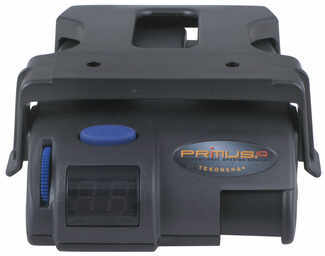
You can adjust the gain (also known as output) with the thumbwheel on the front of the controller. Gain lets you set the maximum amount of power that will be applied to your trailer's brakes. A heavier trailer will need more power to achieve smooth, safe braking, while a lighter trailer will need less. Typically, the gain is only readjusted when you experience changing road conditions or if the weight of your trailer changes.
Power Boost for Heavy-Duty Towing
The boost setting controls the aggressiveness of your trailer's braking, meaning how quickly the brakes reach the maximum braking level. You can adjust this when you're towing heavy loads and you need more umph to bring your trailer to a stop. Your tow vehicle doesn't need that much power to brake in time, but your heavy trailer does.
Depending on the level of boost, your trailer brakes can start at either 13 percent or 25 percent of the set gain. What this means is that, instead of starting at 0, the brakes will start at 25 percent and get to 100 percent sooner. This keeps the trailer from pushing your tow vehicle forward.
If your trailer weighs less than your tow vehicle, no boost is needed. But, if you want your trailer to lead the braking, you can select level B1.
Boost Levels:
| Approximate Gross Trailer Weight | Boost Level | Increase in Initial Power Output |
|---|---|---|
| Less than tow vehicle GVW | B1 | 13% |
| Equal to tow vehicle GVW | B1 or B2 | 13% or 25% |
| Up to 25% more than tow vehicle GVW | B2 or B3* | 25% |
| Up to 40% more than tow vehicle GVW | B3* | 25% |
*Both B2 and B3 offer a 25-percent boost in initial power. But the braking curve for B3 is more aggressive than that of B2. This means that, even though you will start out with the same intensity when using these boost levels, you will get an overall more aggressive braking experience with the higher level. So if you use B3, you will reach maximum braking sooner than if you use B2.
To adjust the boost, use the blue push-button on the top of the Primus IQ.
Slide-Bar Manual Override
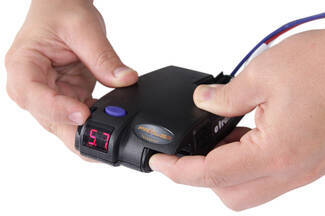
The Tekonsha Primus IQ comes with an easy-to-reach, slide-bar manual override, great for stopping sway or controlling your trailer's momentum in emergencies. To engage the manual override, just push the slide-bar to the left, towards the center of the controller. This will activate the trailer's brakes and brake lights without you having to apply the brakes on your tow vehicle, perfect for limiting trailer movement while you're cruising.
Quick, Simple Installation
The Primus IQ can mount between -90 degrees and 90 degrees vertically, but the brake controller still needs to be horizontally level and parallel with the direction of travel.
After mounting the Primus IQ unit in your cab using the included bracket, simply plug the included custom harness into your vehicle. The other end of the harness plugs into the brake controller. To remove the IQ for storage when you're not using it, just unplug the unit and slide it out of the bracket. With a replacement wiring harness (sold separately) and replacement bracket (6927 - sold separately), you can even transfer the IQ to another vehicle.
Note: If you don't already have a 7-way plug at the back of your vehicle, take a look at our exclusive 7- and 4-way brake controller installation kit (ETBC7 - sold separately).
Proportional Braking
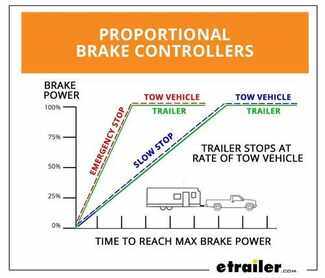
The Tekonsha Primus IQ brake controller comes equipped with proportional braking to give you the best towing experience. Proportional braking means that your trailer brakes mimic your tow vehicle's brakes. If you slam on the brakes in your vehicle, your trailer brakes will activate with the same intensity; if you brake lightly, your trailer brakes lightly too. The trailer's braking is in proportion to your vehicle's braking. This saves wear and tear on the tires and the brakes on both your vehicle and trailer.
The Primus IQ uses an internal inertia sensor to detect how your vehicle is braking so it can send the right amount of braking power to your trailer. It measures the inertia of your tow vehicle and activates the trailer's brakes to slow at the same rate. The result is uniform braking across your towing setup. No push-pull action - just smooth, proportional braking every time.
90160 Tekonsha Primus I-Q Proportional Brake Controller - 1 to 4 Axles
Replaces 39528 Hidden Hitch and 20191 Draw-Tite I-Stop IQ Proportional Brake Control
303100 Tekonsha Brake Control Wiring Adapter with 2 Plugs - Toyota
Replaces Tekonsha 3017-P and 3031-P
Installation Details
California residents: click here

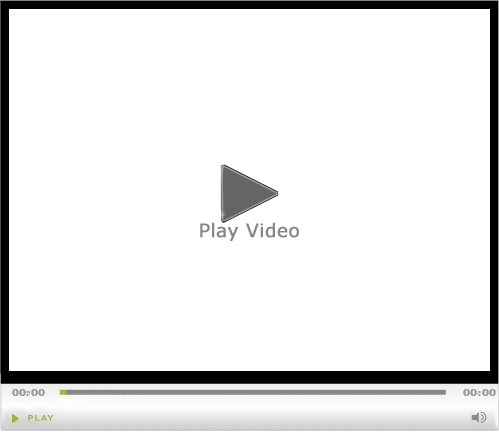
Videos are provided as a guide only. Refer to manufacturer installation instructions and specs for complete information.
Video Transcript for Trailer Brake Controller Installation - 2007 Toyota Tundra TK90160
Speaker 1: Today on our 2007 Toyota Tundra, we're going to be taking a look at and showing you how to install the Tekonsha Primus IQ trailer brake controller for one to three axle, part number TK90160. To help us get that installed, we're going to be using the Tekonsha plugin wiring adapter, part number 3040-P.This is what our brake controller looks like when it's installed. What this is going to be good for is this is going to help you apply brakes to your trailer while you're traveling, in turn saving the brakes on your truck. This is going to be a proportional brake controller which means that the braking force applied in the truck will be matched on the trailer. For instance if we have a quick braking situation and you apply the brakes in your truck, the same amount of force will be applied to the trailer brakes so that the trailer will stop itself instead of the truck having to stop both.Now how this is going to differ from a time delayed, on a time delayed brake controller, when you apply the brakes in the truck it's going to take a few seconds for the brakes to be applied in the trailer. This is just the opposite.
When the brakes are applied in your truck, the brakes are automatically applied in the trailer at the same time. This button here is going to be for our gain. This is going to allow us to adjust the amount of force being applied, or being sent to our trailer brakes. This button here on top is going to be our boost. We're going to have three settings.
It's going to be zero, go to one, boost two, and boost three. Now we're going to set this depending on our trailer load in reference to the weight of the vehicle.Boost one's going to be for a trailer, maybe a light trailer that is not loaded. You're not going to want any boost or even boost one maybe. As your trailer gets heavier, or trailer matches the weight of the truck or goes over, you're going to want to go to boost two or boost three. And what that's going to do, is that's going to adjust the aggressiveness of the braking force sent to our trailer.
This button here, or slide knob, is going to be our manual override. And what that's going to do, is whatever we have our maximum pressure set at, and the maximum force set at, this is going to allow us to apply the brakes on our trailer without applying the brakes in our truck.So if we have an emergency situation and our trailer feels like maybe it's swaying or getting off center from the truck, maybe you're going down a hill, and you want to apply those brakes on the trailer to get it back steady again, or back behind the truck so you have control of it. You would use this button right here. As far as the installation, it is going to be very simple and straightforward. You'll just need to get that adapter plug from Tekonsha.
It's going to plug directly into your factory tow package wiring underneath your dash.Now that we've gone over some of the features, let's show you how to get it installed. So to begin our installation, we're going to take the white end of our adapter plug, and we need to find the matching end. Now if you look right up here behind the emergency brake pedal, right above this panel you'll see a plug. Very easy to get to. We're just going to take our white end, plug them in together until you hear it click. The next thing we need to do, is we need to mount our ground wire. Now what I like to do is try to find an existing nut that is mounted to the body, make sure it's on metal. You look right here behind the emergency brake pedal, there's a nut.You can see our ring terminal's just a little bit too small, so what we're going to do is we're going to replace that with a bigger one. Super ring for our 10 to 12 gauge wiring. So we'll cut off this one, crimp this back, crimp it down. Give it a little tug, make sure you've got a good connection, and we'll take a half inch socket with a fairly long extension, and take that nut off. Add our ring terminal, and then replace our nut. Next I'm going to route my adapter. What I want to do is I want to find some existing wiring up inside here that I can zip tie or secure it to. I'm going to run it across. You want to make sure it's over on this side of the steering wheel.The reason you want to stay away from this side, is when you're getting in and out of the truck, you take a chance of damaging it or hitting it, knocking it off. Next I'm going to take my wire. I'm going to take some black electrical tape, and I'm going to cover up my wires just to kind of help it blend in with the brake controller itself. Just kind of make it look nice. Next we're going to mount our bracket that's going to hold our brake controller onto our dash. You see, our customer had something preexisting he had here. So what we're going to do is we're going to use the same holes. I'm going to make sure I'm going to be able to put my bracket there. It looks like we'll be able to fit it.So we're going to take the screws that comes in our kit with our brake controller and we'll fit it in place. On your brake controller you're going to have two holes on each side. On your bracket, you're going to have an elongated hole on each side, and then you're going to have another hole above it. That's where we're going to be mounting our brake controller. Your kit's going to come with a couple extra screws. So we'll line up our holes, and our brake controller will fit into place. Go ahead and put our remaining screws into place. And you can use just a regular socket on this. You can see this is a very small space to get into.Now that we've got it plugged in, you can see here on the top it's blinking NC. That's means no trailer's connected. But you can see we do have power. So next we'll test it out to make sure we're getting power to the seven pole in the back of the vehicle. Now that we have our alternative power source connected to the vehicle, you can see on the screen here that our NC changed to a C showing that we're connected. That's going to be good so that if you're traveling, and it goes from C to NC, you know you have an issue with the trailer. You need to stop and check it out. And that'll do it for a look at and installation of the Tekonsha Primus IQ proportional trailer brake controller for one to three axles, part number TK90160 on our 2007 Toyota Tundra.
Customer Satisfaction Score:
96% were satisfied with this product
4% of customers were not satisfied
- etrailer mistake
Ratings & Reviews
4.8
2153 reviews
Easy to install and very affordable.
Quick install works Great
Worked great!
easy to install
Just what the doctor ordered. Thanks
The package arrived on time (actually a day early!). It came with the correct Harness. It was easy to install and is working properly!
Great for the price
Ordered as replacement for one that quit after 18 years. New plugged into existing wiring and even fits in existing mounting bracket. So far so good.

was easy to install and works great

Easy to hook up , works flawlessly
Simple hook-up when using the model specific harness.

Easier to install than expected. Works flawlessly
Very easy installation.
Haven't tried it yet but it was very easy to install plug and play if you have tow package already
fast shipping, it installs easily. It's too early to comment on how good it works.
See what our Experts say about this Tekonsha Trailer Brake Controller
- Which Way Should Diode Point on Highlander for Install of Brake ControllerYes you need the diode arrow to point towards the brake controller. That will allow the voltage to travel into the controller but not backfeed back on to the Highlander in any way. If you need a diode we have the part # RM-690.
view full answer... - Mounting Dash Clip for the Tekonsha Primus IQ Brake ControllerThe plastic under dash mount for the Tekonsha Primus IQ, part # TK90160, is the Tekonsha Primus Mounting Dash Clip, part # 6927. We also carry the Replacement Mounting Kit Bracket # 5280 as well. The hardware is not provided so you will need to pick some up at your local hardware store.
view full answer... - Does a Tekonsha Primus IQ Brake Controller Need to be Removed when Not In UseAs long as it's not in the way for your daily vehicle use you will be just fine to leave your Primus IQ brake controller part # TK90160 installed all the time as that is what nearly everyone does with their controllers. Now if the controller is getting in the way and you are banging your leg on it or you just don't like it sitting there you could easily unplug it and store it till you need it.
view full answer... - Troubleshooting an SH Code on the Tekonsha PRIMUS IQ Electronic Brake Controller # TK90160If you click on the link that I have provided for the installation instructions, you can see the troubleshooting chart just below the installation details. The SH code that you see on your Tekonsha PRIMUS IQ brake controller indicates there is a short somewhere on the brake output circuit when idle, or when the brake pedal is not being pressed. Tekonsha states that this issue can sometimes be caused by some test lights if you are using test lights. To troubleshoot this issue, start by...
view full answer... - Brake Controller Plug Location on 2021 Jeep Grand CherokeeThe factory brake controller connector on your 2021 Jeep Grand Cherokee is located under the dash behind the hood latch, as shown in the provided photo. Keep in mind, the connector will only be there if the vehicle has the factory tow package which includes the 7-way trailer connector at the rear bumper. If you have the tow package, to install the Tekonsha # TK90160 Primus brake controller on your 2021 Grand Cherokee you'll need the Tekonsha # TK93VR wiring harness. One end plugs into...
view full answer... - How To Prevent Tekonsha Primus Trailer Brake Controller From Draining Vehicle Battery When Sitting I wish I could give you an exact power draw for the Tekonsha Primus IQ Trailer Brake Controller # TK90160 but after spending 2 hours on hold with them they only said it is near 0 draw. Since it sounds like your Primus is connected directly to the battery and not a ignition powered switch you might consider adding a Relay # BDW42035 so the power going to the controller will switch off when the ignition is switched off. With any battery which sits for months at a time you really should...
view full answer... - Troubleshooting Primus IQ Brake Controller that Shows N.C. on DisplayThere are 4 possible reasons why the Tekonsha Primus, # TK90160, is telling you N.C. 1. Trailer not connected to tow vehicle. 2. Trailer connected with open circuit on brake line. 3. Trailer connector disconnected or corroded. 4. Loss of trailer brake magnet ground. The first one is easy enough to solve so we will go on to the second possible issue. An open circuit on the brake line or a short to the brake circuit could be caused by a couple of different issues. First, it is possible...
view full answer... - Location of Brake Controller Port on 2023 Jeep Grand Cherokee 4xeHi Robert; it looks like your 2023 Jeep Grand Cherokee 4xe doesn't have a brake controller port since you don't have the tow package. This means hard wiring the # C27JR is your only option for installation. If have a plug and play wiring harness I would return it to whoever you bought it from.
view full answer... - Installing Trailer Wiring and Brake Controller on a 2018 Chevy Express 3500I'm not sure what that 8-pin plug on your daughter's 2018 Chevy Express Van 3500 is, but I can say that is definitely not something used for trailer wiring. Since the Express Van didn't come with the factory tow package 7-Way you'll want to look for a frame pocket on the driver side rear left corner of the frame for a seven-wire harness with the connector that you should be able to install wiring with a US round connection, like the Hopkins # HM40975, to. If you can't find that wiring...
view full answer... - Pre Collision Warning Error After Brake Controller Install on a 2017 Toyota HighlanderThe Collision System Malfunction error message that you are experiencing on your 2017 Toyota Highlander after installing the Hopkins Reliance Trailer Brake Controller is a result of power backfeeding on the stop light switch wire into the collision system. In order to eliminate this you are going to need to install a 1 amp diode on the red wire between the brake controller and vehicle's wiring harness. This will then prevent power from backfeeding and allow you to use the Reliance on your...
view full answer... - Brake Controller For A 2023 Ford Ranger With Factory 4 FlatHey Bill, You can absolutely use your Primus IQ on your 2023 Ford Ranger! The installation will be a bit different, since there is not a plug and play adapter for your vehicle it will need to be spliced in. If you do not have the universal harness it came with originally we do have a replacement, # 20127. This would just plug into the back of the controller and then splice into the vehicle. For your Ford Ranger, the 4 flat plug that is on it would be considered "without a factory tow...
view full answer... - How To Tell If a Ford Transit Has the Tow Package and Parts Needed To Add ItThe Ford Transit if equipped with the factory tow package would have came with both a trailer hitch and trailer connector and they would both be located directly under the rear bumper so odds are you do not have either because they are not hard to locate. The factory tow package was also not a very common option but I can provide you with everything to add this on your own at a fraction of the price. The Draw-Tite Max-Frame Trailer Hitch Receiver part # 75912 is a confirmed fit for a 2015...
view full answer... - Troubleshooting OL and SH Error Codes on Tekonsha Primus IQ Trailer Brake Controller # TK90160Both the OL (overload) and SH (short) error messages on your Tekonsha Primus IQ Trailer Brake Controller # TK90160 tend to suggest that either your trailer has too many brakes for the controller (6 are the maximum) or that there is a problem in your trailer's brake circuit wiring. You can start by inspecting both the vehicle and trailer connectors for any signs of corrosion or trapped dirt that could cause two circuits to become bridged together. Check both sides of each connector and clean/replace...
view full answer... - Troubleshooting Pre-Collision System Malfunction with Primus IQ Installed on a 2017 HighlanderI spoke with my contact at Tekonsha who knew exactly what you were talking about. He said that the best solution for installing a brake controller like the Primus IQ # TK90160 in your 2017 Toyota Highlander is to install a diode on the red wire of the wiring harness for the Primus IQ. This is the wire that connects to the cold side of the stop light switch. To prevent the 12V from backfeeding into your Pre-Collision System he recommended using a diode rated for 1 amp. These are not very...
view full answer... - Brake Controller Connector Location on a 2020 Ford ExplorerIf your 2020 Explorer is equipped with the factory 7-way trailer connector, it will have the brake controller connector under the dash. The connector is located under the dash, above and to the right of where the driver's right knee would be. The connector will be rectangular, and will be gray in color. If you use a Tekonsha brake controller like the Tekonsha Primus, part # TK90160, the # 3035-P wiring adapter is the correct harness. If the vehicle doesn't have the factory 7-way, the connector...
view full answer... - Primus IQ Brake Controller Wiring FunctionsThe Primus IQ # TK90160 doesn't have instructions that come with a wiring diagram, but we have a picture/diagram on our site that shows which wires are connected to which functions on your vehicle. I attached the diagram for you to view, the wires will be connected as follows: White - Ground Black - 12V Power Blue - To 7-Way at rear of vehicle Red - Cold side of stop light switch If you are needing a new pigtail for your Primus IQ it is part # 7894. This same harness will work with most...
view full answer... - Troubleshooting Weak Trailer Brakes That Won't Lock Up with Override Lever of Controller SlidThis could be a magnet wiring problem. It is unlikely that the magnets are bad on newer assemblies, but if the wiring is not properly connected, it could cause problems. Check to see that the magnets are properly grounded to a clean, bare metal surface free of corrosion. A bad ground would not allow the circuit to be complete and lead to the brakes not performing like they should. I also recommend checking the trailer side connector ground and the vehicle side connector ground. Another...
view full answer... - Troubleshooting SH Code on a Primus IQ Brake ControllerIf you click on the link that I have provided for the installation instructions, you can see the troubleshooting chart just below the installation details. The SH code that you see on your Tekonsha PRIMUS IQ brake controller indicates there is a short somewhere on the brake output circuit when idle, or when the brake pedal is not being pressed. Tekonsha states that this issue can sometimes be caused by some test lights if you are using test lights. To troubleshoot this issue, start by...
view full answer... - What Do the Codes Displayed on the Primus IQ MeanAfter installing your Tekonsha Primus IQ Trailer Brake Controller # TK90160 you should see the following two-digit display: n.c. which means "power to brake controller without trailer connected." This displays for 15 seconds then changes to two dots ( . . ) With the trailer connected you will see .c displayed which means "boost feature not engaged," or .c. for "boost feature engaged." A display of b.1, b.2, or b.3 shows the boost level setting. See the chart at right of typical boost settings. A...
view full answer... - Can Tekonsha Repair a Broken Prodigy Brake ControllerI spoke with my Tekonsha representative, who told me that they do not repair or offer a replacement manual brake lever for your Prodigy. I'd recommend you replace the brake controller. The original Prodigy has been discontinued by the Prodigy P2, part # 90885. The P2 operates similarly to the original Prodigy, but it features a blue LED display, is compatible with electric over hydraulic braking systems and contains a relay that operates the trailer brake lamps when the manual brake switch...
view full answer... - 2017 Chevy Colorado Brake Controller Installation The Tekonsha Primus IQ Trailer Brake Controller # TK90160 does come with the wiring to connect to your 2017 Chevy Colorado. There isn't a plug and play harness, but your truck has the wires for the brake controller already run under your dash. I've attached a video of this installation for you to assist.
view full answer... - Brake Controller Connector Location in 1997 Dodge RamYour dealer should be able to provide the details you're looking for based on the VIN. I'd agree, since that fuse is installed, you very likely have the factory 7-way tow package. Although most 1997 Dodge Ram trucks will have the connector under the dash, not all of them will. If present, the connector will be located atop or next to the white rectangular box on the firewall behind the emergency brake pedal, as shown in the provided photo. If you've found a flat blue 4 pin connector...
view full answer... - Plug-In Brake Controller for a 2019 Subaru AscentAccording to Tekonsha, the Tekonsha Plug-In Wiring Adapter for Electric Brake Controllers part # 3062-P will fit your 2019 Subaru Ascent and allow you to use the Tekonsha Primus IQ Trailer Brake Controller part # TK90160. The plug is located underneath the dash and left of the steering column, taped to another harness near the emergency brake pedal which you can see in the attached photo.
view full answer... - Instructions Manual for Tekonsha Primus IQ Trailer Brake Controller I have attached the complete written manual below for the Tekonsha Primus IQ Trailer Brake Controller # TK90160 that you can use for reference. As long as everything is wired correctly the brake controller should detect your Cougar Camper as soon as you connect the 7-Way on your F-150 to the 7-Way on the trailer. Please just let me know if you have any other specific questions or issues regarding the Primus IQ and I will be happy to help!
view full answer... - Can Integrated Brake Controller of 2017 Toyota Tundra Be Replaced with P3Yes you can replace the factory brake controller of your 2017 Toyota Tundra with the Prodigy P3 part # 90195. You would just need the correct install harness part # 3031-P to plug the P3 in place of the factory controller.
view full answer... - Location of Brake Controller Port on 2015 Toyota TundraThe brake controller port for the 2015 Toyota Tundra is located behind the section of the dashboard with the tow/haul button. To reach the connector you will need to locate the notch in the access panel in the center of the dash near the driver's side. Using a trim panel puller, carefully pry the panel out and undo the locking tabs to remove the panel. You will find the mating connector behind this portion of your dashboard. Simply plug the Tekonsha Plug-In Wiring Adapter, # 3031-P, into...
view full answer... - Location of Brake Controller Plug on a 2016 Toyota Tacoma TRD Sport Off-Road w/Factory Tow PackageGreat news! I can help you find the brake controller harness on your truck. Since you have a factory tow package on your 2016 Toyota Tacoma you will have a plug for a brake controller in your dash. According to the instructions on the # 3031-P harness for the Proportional Brake Controller P3 # 90195, which I highly recommend, the plug is located above the driver kick panel. I have linked the full set of instructions for the # 3031-P adapter to this page for your convenience. For a...
view full answer... - Recommended Trailer Brake Controller When Switching From Factory Controller on 2016 Toyota TundraYou can switch from the factory controller to an aftermarket on your 2016 Toyota Tundra Brice. I personally am a big fan of the Tekonsha Prodigy P3 # 90195 which will connect with the Harness # 3031-P. The reason I like the P3 is the ease of use and versatility. It can work with trailers up to 4 axles and electric or electric over hydraulic brakes. The LCD screen is very easy to read and understand and will even tell you what is wrong and what to check should you have any issues with the...
view full answer... - Is Tekonsha Prodigy P3 Brake Controller Pigtail Wiring Harness Sold SeparatelyI can understand not wanting to undo the wiring and then re-do it, and the pigtail harness is available separately for the Tekonsha Prodigy P3 # 90195. The correct part is the following: - Replacement Brake Control Plug-In Harness # 20127 One end of this will plug into the P3 and the other end will hardwire to your new vehicle. In case you were interested in a new mounting bracket as well, the correct part for that is the Replacement Mounting Bracket Kit for Tekonsha Prodigy P3 Trailer...
view full answer... - Installing the Prodigy P3 Brake Controller on a 2018 Toyota TundraYou definitely made a great purchase with the P3 # 90195! Since you already have the OEM brake controller in your 2018 Toyota Tundra I would be surprised if you don't have to take it in to a dealer to have them turn something off. I can definitely attach that tech bulletin so that you can read it easier but you actually may not need to do all of the hardwiring. Apparently about midway through the 2018 model year Toyota started putting the plugs in the Tundra pickups. If you check the...
view full answer... - Where Is Brake Controller Install Harness on 2017 Toyota TacomaOn a 2017 Toyota Tacoma the location to install the # 3031-P is behind the kick panel to the left of your left foot. I attached a picture. You'll need to pull off the kick panel.
view full answer... - Does Brake Controller Install Harness for 2015 Toyota Tundra Have Extra Ground WireThe brake controller harness part # 3031-P which is the correct one to install the Prodigy P3 part # 90195 in your 2015 Toyota Tundra does have a ground wire that needs to be ran outside of the harness as well. We drilled a hole on the firewall when we installed the ground strap as we found that to be the easiest when we used this harness to install a controller in a 2013 Tundra like yours. See video I attached.
view full answer... - How to Mount Prodigy P2 part # 90885 in 2017 Toyota TacomaThe P2 # 90885 must be mounted on a level horizontal (side-to-side) plane and must be lined up with the direction of travel for the internal sensor to function properly. For an install harness in your 2017 Toyota Tacoma what you need is the part # 3031-P. Most people install the controller on the lower dashboard of the vehicle to the right of the steering wheel where it wouldn't interfere with you right leg.
view full answer... - Is An Additional Ground Needed for the Brake Controller Harness On a 2020 Toyota TacomaThe correct brake controller adapter plug for a 2020 Toyota Tacoma is going to be dependent on the brake controller. If you are using the Tekonsha Prodigy P3 Trailer Brake Controller part # 90195 for example then you'll need the Tekonsha Custom Wiring Adapter for Trailer Brake Controllers part # 3031-P which does indeed require an additional ground. That said, there is most likely an existing stud you can use for the ground without having to drill a hole. The other option is the Curt Echo...
view full answer... - Best Brake Controller to Replace Integrated Controller of 2018 Toyota TundraThe Prodigy P3 part # 90195 is basically the gold standard for brake controllers in terms of performance, reliability, and ease of use. This would be the best option for your 2018 Toyota Tundra to replace your integrated brake controller.
view full answer... - How to Install Brake Controller and 7-Way on Toyota Truck with 4-WayTo convert your 4-way to a 7-way and install the P3 part # 90195 all you need is the brake controller install adapter part # ETBC7. This comes with everything needed to wire up the brake controller as well as convert from the 4-way to a 7-way.
view full answer... - Recommended Brake Controller and Plug in Adapter for a 2017 Toyota TundraThe Prodigy P3 item # 90195 is compatible with your 2017 Toyota Tundra. This is a proportional brake controller that activates your trailer's brakes when your Tundra decelerates. You will want to use the Custom Wiring Adapter for Trailer Brake Controllers item # 3031-P to complete your installation without cutting or splicing wires.
view full answer... - Will Tekonsha Primus IQ Work With 2015 Toyota TundraThe Tekonsha Primus IQ # TK90160 will work great on your 2015 Tundra. If you have the factory 7-way trailer connector you can use the plug-in adapter # 3031-P for the brake controller. If you do not have a 7-way connector you will need to hardwire the brake controller. If you have a 4-way trailer connector you will need part # ETBC7. This connects to the 4-way and then additional wiring will need to be done as shown in the attached drawing.
view full answer... - Recommended Brake Controller for 2022 Toyota TacomaI really like a remote-mounted controller like the Redarc Tow-Pro Liberty, part # RED24FR and the # RED99FR wiring harness. The brake controller itself mounts under the dash, out of sight. The controller would be operated via the control knob which could be installed using an un-used switch knockout in the dash or center console. A mounting bezel like part # 331-TPSI-002 would make for a factory-looking installation. The Tekonsha # TK90160 Primus you'd looked at would also work just fine...
view full answer... - Location Of Brake Controller Port On 2015 Toyota TundraOn your 2015 Tundra, the vehicle side connector is located behind an access panel located in the center of the dash, just to the right of the steering column. You can check out the attached photo that shows where this panel is located. Using a trim panel puller, carefully pry the panel out and undo the locking tabs to remove the panel. You will find the mating connector behind this portion of your dashboard. I have attached a photo that shows what the connector will look like. If you...
view full answer... - Brake Controller Install Harness for 2023 Toyota TacomaThe brake controller install harness part # 3031-P is the correct install harness for a Tekonsha Primus brake controller part # TK90160 in a 2023 Toyota Tacoma.
view full answer... - What Is The Best Brake Controller For My 2023 Toyota TacomaFor your 2023 Toyota Tacoma I recommend the Tekonsha Prodigy P3 # 90195. This is a fully proportional dash mount controller and can control up to 4 axles at once, so this will work great for your 2 axle trailer. Large accessible buttons and an LCD display make it very easy to use. Controls for changing setting and output are right at your fingertips. You also have the option to use a plug and play pigtail # 3031-P. All you will have to do is mount the controller, plug in and connect the...
view full answer... - Which Harness for 2013 Chevy Silverado 1500 to Install Tekonsha Brake Controller I have a solution for you, but there is not a plug and play harness available for the 2013 Chevy Silverado 1500; the wires are available to tap into, but you will need to hard wire in the connections. Since you've got a Tekonsha Prodigy P3 # 90195 you'll need the Replacement Brake Control Plug-In Harness for Tekonsha and Draw-Tite Brake Controller 12" Long # 20127. I've linked an installation video of this pigtail harness for you to check out on a similar Silverado for you to check out.
view full answer... - Recommended Brake Controller and Install Location for a 2017 Toyota TacomaThe best place to locate a brake controller is, like you said, out of the way, but also in a spot that is easy for you to activate the manual override switch in case of an emergency situation. Most people mount the controller on the underside of the dash just to the left or right of the steering wheel on the driver side. Since pretty much every brake controller is relatively the same size (about the size of your hand) I recommend going with the Tekonsha Prodigy P2 # 90885. This is a great...
view full answer... - Brake Controller Harness For 2023 Toyota Tacoma For Tekonsha Brake ControllerYes you sure can, and I verified directly with Tekonsha the correct adapter needed for your 2023 Toyota Tacoma, the Tekonsha Custom Wiring Adapter for Trailer Brake Controllers # 3031-P.
view full answer... - Installing Brake Controller on 2014 Toyota Tundra Using OEM Brake Controller PigtailI'm assuming you're speaking of the factory brake controller pigtail. The wire colors you mention don't match the ones I show, so you'll need to do some testing. To determine which wire performs which function, you'll need to plug the pigtail into the connector under the dash. Then, use a circuit tester like part # PTW2993 to test each wire. One wire should provide a constant 12-volts. This is the power wire that would connect to the black brake controller wire. Another wire will only...
view full answer... - Replacing OEM Brake Controller on 2016 Toyota Tundra With Tekonsha Prodigy P3 # 90195Since your 2016 Toyota Tundra already has the factory 7-Way and wiring installed, replacing your OEM brake controller with the Tekonsha Prodigy P3 # 90195 will be a breeze. All you will need to do is choose where you would like to mount the bracket for the P3 and then use the Plug-In Wiring Adapter # 3031-P and connect it to the connector under your driver's side dash. Since you have an OEM controller installed it will be the connector that is installed on that. I have attached a video...
view full answer... - Installation of Brake Controller Custom Harness on 2018 Toyota Tacoma SR5The Tekonsha Custom Wiring Adapter for Trailer Brake Controllers - Dual Plug In # 3031-P will connect to your Tacoma's factory harness. The harness will be located underneath and left of the steering column, behind kick panel taped to another harness near the emergency brake pedal. There will be a white 10-pin connector that mates with the one on the adapter.
view full answer...
Do you have a question about this Trailer Brake Controller?
Info for this part was:




At etrailer.com we provide the best information available about the products we sell. We take the quality of our information seriously so that you can get the right part the first time. Let us know if anything is missing or if you have any questions.




































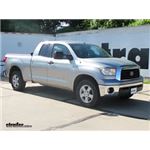
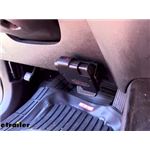

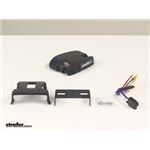

























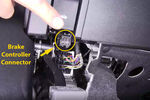

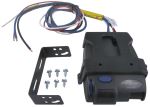



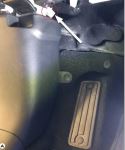





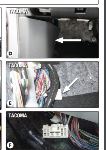





Thank you! Your comment has been submitted successfully. You should be able to view your question/comment here within a few days.
Error submitting comment. Please try again momentarily.